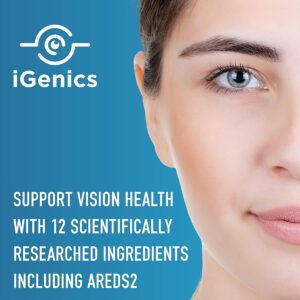Blurry vision is a common issue that many people experience at some point in their lives. Whether it’s caused by eye strain, dehydration, or underlying health conditions, blurred eyesight can affect your quality of life, productivity, and even safety. While it is always important to consult an eye care professional for persistent vision problems, there are also natural remedies and lifestyle adjustments that can help reduce eye discomfort and support long-term eye health.
In this comprehensive guide, we’ll explore the causes of blurry vision, natural solutions you can start using right away, and lifestyle habits that protect and improve your eyesight over time.
Understanding Blurry Vision
Blurry vision can manifest as difficulty focusing, fuzzy outlines, or hazy images. It may affect one or both eyes and can be temporary or long-term. Common causes include:
- Eye strain from prolonged screen use or reading.
- Dry eyes caused by insufficient tear production.
- Refractive errors such as nearsightedness, farsightedness, or astigmatism.
- Dehydration leading to reduced lubrication of the eyes.
- Nutritional deficiencies such as low vitamin A or omega-3 levels.
- Underlying health issues including diabetes, hypertension, or migraines.
Identifying the root cause is key. While natural remedies can help in many cases, serious or persistent blurry vision requires medical attention.
Natural Remedies for Blurry Vision
1. Hydrate Your Eyes and Body
Dehydration is a hidden but common cause of temporary blurry vision. Make sure to drink enough water daily and consume water-rich foods like cucumbers, melons, and leafy greens. Staying hydrated keeps your eyes lubricated and reduces strain.
2. Palming Exercise for Relaxation
Palming is an ancient eye yoga technique. Rub your palms together until warm, then gently cup them over your closed eyes without applying pressure. This relaxes the optic nerve, reduces strain, and may improve clarity. Practice for 2–3 minutes several times a day.
3. Blink More Frequently
When staring at screens, we blink less, leading to dry and blurry eyes. Consciously blinking every 4–5 seconds refreshes the tear film, prevents dryness, and enhances focus.
4. Eye Massage and Warm Compress
Gently massaging the areas around your eyes boosts blood circulation, while a warm compress can relieve tension, improve tear flow, and reduce dryness.
5. Herbal and Natural Eye Drops
Lubricating drops made with herbal extracts like rose water or triphala (an Ayurvedic blend) can help soothe dry eyes naturally. Always choose high-quality, preservative-free eye drops.
6. Omega-3 Fatty Acids
Foods rich in omega-3s—such as salmon, flaxseeds, and walnuts—support tear production and eye lubrication. Supplements can also help if your diet is lacking.
7. Vitamin-Rich Foods
- Vitamin A (carrots, sweet potatoes) for night vision.
- Vitamin C (oranges, bell peppers) for protecting against oxidative stress.
- Vitamin E (almonds, sunflower seeds) for reducing age-related eye issues.
- Zinc (pumpkin seeds, lentils) for overall eye health.
8. 20-20-20 Rule
Every 20 minutes of screen use, look at something 20 feet away for at least 20 seconds. This reduces digital eye strain and supports long-term visual clarity.
9. Reduce Screen Time Before Bed
Blue light from screens disrupts sleep cycles and contributes to eye fatigue. Limiting screen use 1–2 hours before bedtime helps both your vision and sleep quality.
10. Triphala Tea Wash
In Ayurveda, washing eyes with cooled triphala tea is believed to improve clarity and reduce strain. Always use sterilized water and ensure cleanliness to avoid infection.
Lifestyle Tips to Support Clear Vision
1. Balanced Diet for Eye Health
Incorporate colorful fruits, vegetables, nuts, seeds, and whole grains into your meals. These provide antioxidants and nutrients that protect eye tissues from damage.
2. Regular Exercise
Cardio exercises like walking, jogging, or yoga improve circulation, ensuring your eyes receive enough oxygen and nutrients.
3. Quit Smoking
Smoking accelerates age-related macular degeneration and increases the risk of cataracts. Quitting is one of the best things you can do for your vision and overall health.
4. Wear Sunglasses
UV rays damage the eyes over time. Wearing high-quality sunglasses reduces the risk of cataracts and photokeratitis (sunburn of the eyes).
5. Get Enough Sleep
Poor sleep leaves eyes red, tired, and blurry. Aim for 7–9 hours of quality rest to let your eyes recover daily.
6. Practice Eye-Friendly Work Habits
Adjust screen brightness, maintain proper posture, and position screens at eye level to reduce stress on your eyes during long hours of work.
7. Manage Blood Sugar and Blood Pressure
High blood sugar damages the retina, while high blood pressure strains blood vessels in the eyes. Regular checkups and a healthy lifestyle prevent long-term vision complications.
8. Schedule Regular Eye Exams
Even if your vision seems fine, yearly checkups can catch early signs of glaucoma, macular degeneration, and other conditions that may cause blurry vision.
When to See a Doctor
While natural remedies and lifestyle tips can greatly improve eye comfort and clarity, some cases of blurry vision signal serious medical issues. Seek immediate medical help if you experience:
- Sudden or severe blurry vision.
- Blurriness accompanied by headaches, dizziness, or nausea.
- Flashes of light or sudden loss of vision.
- Persistent blurriness despite natural remedies.
Final Thoughts
Blurry vision can be frustrating, but in many cases, natural remedies and healthy lifestyle choices can provide relief and prevent future problems. By hydrating well, nourishing your body with essential vitamins, practicing eye exercises, and reducing digital strain, you can support clearer, sharper vision.
Remember: your eyes are precious. Combining natural care with regular professional checkups is the best way to maintain lifelong eye health.

